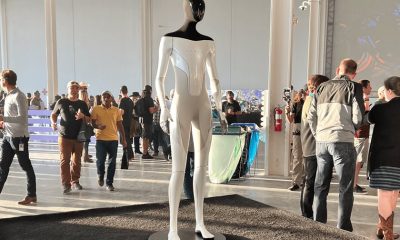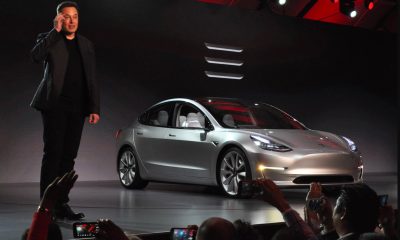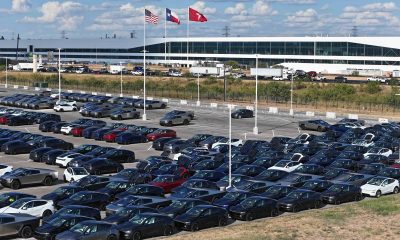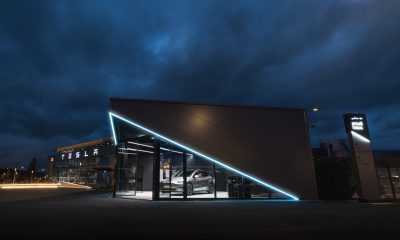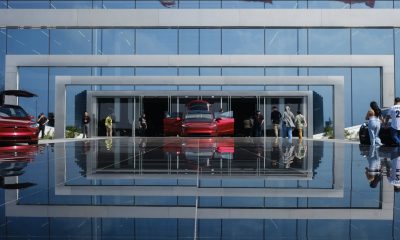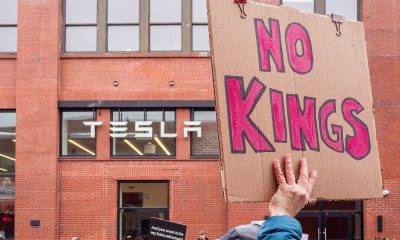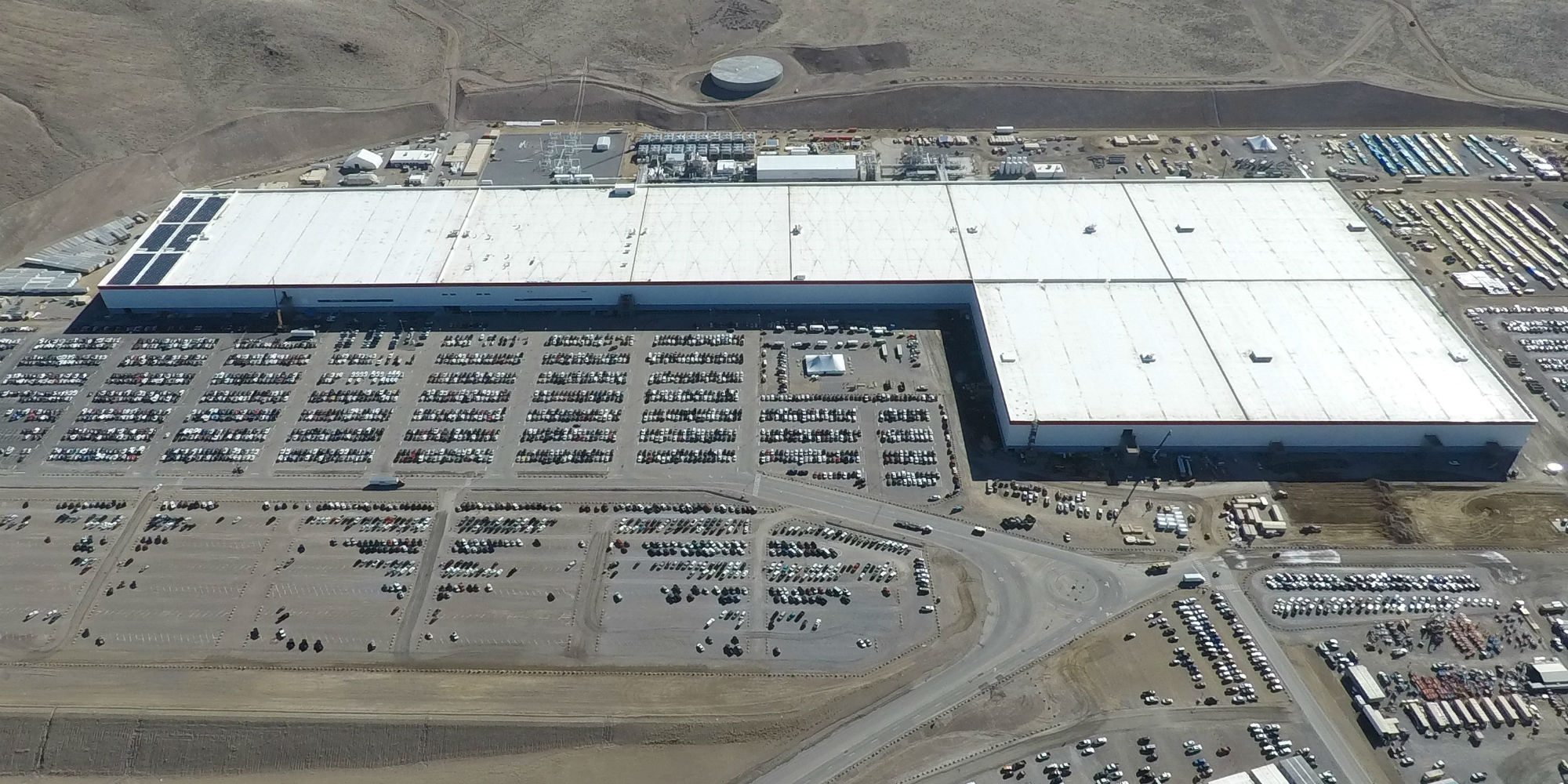

Investor's Corner
Tesla Gigafactory 1 to see Panasonic’s new battery lines and new Grohmann machines in Q4
Tesla’s upcoming ramp this Q4 2018 is starting to look a lot more encouraging, as Gigafactory 1, the company’s battery and powertrain facility, is set to receive upgraded battery lines from Panasonic, as well as new machines from Grohmann Automation. With these upgrades in place, Tesla’s continued Model 3 push would likely be a lot smoother than the previous quarters.
It is no secret that the Model 3 production ramp has been difficult for Tesla. In an interview earlier this year, Elon Musk described the past twelve months as some of the most difficult and “painful” periods of his career. Despite being in “production hell” for the past year, though, Tesla has started hitting its stride with the manufacturing of the Model 3. This quarter alone, Tesla is aiming to produce 50,000-55,000 units of the electric car — a goal that even a longtime skeptic of the company believes is attainable at this point.
Inasmuch as Tesla would likely break its production records this Q3, the company is just around halfway done with its Model 3 ramp. Tesla expects to increase its output for the vehicle to 10,000 units per week sometime next year as it offers other trims like the $35,000 base Model 3, which will be fitted with a smaller battery pack. To accommodate this upcoming demand, Tesla’s Gigafactory 1 would need to be upgraded.
In a statement to Bloomberg, Tesla partner Panasonic Corp. has announced that it is poised to complete its planned upgrades to the facility’s battery cell production lines earlier than expected. Back in July, Panasonic announced that it would install three new battery cell production lines sometime at the “end of 2018,” but according to Yoshio Ito, head of Panasonic’s automotive business, the Japanese company is now aiming to complete the upgrades earlier than expected. Ito also noted that the bottleneck in Model 3 production had been the result of Panasonic’s challenges in meeting Tesla’s demand.
“The bottleneck for Model 3 production has been our batteries. They just want us to make as many as possible,” Ito said.
The completion of Panasonic’s upcoming upgrades to Gigafactory 1’s battery cell production lines comes amidst the arrival of new machines from Tesla Grohmann Automation, which are designed to boost the electric car maker’s production capabilities. Updates on the new Grohmann machines were related by analysts from Worm Capital who went on a tour of Gigafactory 1 back in August. According to the analysts, Tesla head of investor relations Martin Viecha noted that upgrades from Grohmann, which are set to be sent to Gigafactory 1 by the end of Q3 or the beginning of Q4, would help module production become three times faster and three times cheaper.
“Grohmann Engineering will help module production become three times faster, and three times cheaper, according to Viecha. Their new system will be sent to the Gigafactory by the end of Q3 or beginning of Q4. The Grohmann machine will be in Zones 1, 2, 3, and Tesla will be receiving three machines. The process was designed to alleviate the previous bottleneck in module production which delayed Model 3 production significantly. The machine is already built, and points to the advantage Tesla will have in building future Gigafactories. They have learned many painful lessons, but have a solid blueprint for porting the factory across the world.”
Tesla’s demand for battery cells is set to increase within the coming quarters. As the company sets its sights on more ambitious targets, upgrades to Tesla’s key facilities like Gigafactory 1 could be the determining factor on whether the electric car maker can smoothly ramp production or not. With Panasonic’s upgraded battery cell production lines and the new Grohmann machines, Tesla’s Q4 ramp could very well be the company’s most impressive yet.
Elon Musk
‘You chose ambition’: Tesla Chair hails shareholders for backing Elon Musk’s vision
Denholm stated that the vote highlighted TSLA investors’ continued confidence in both Musk’s leadership and Tesla’s vision for an autonomous, AI-driven future.
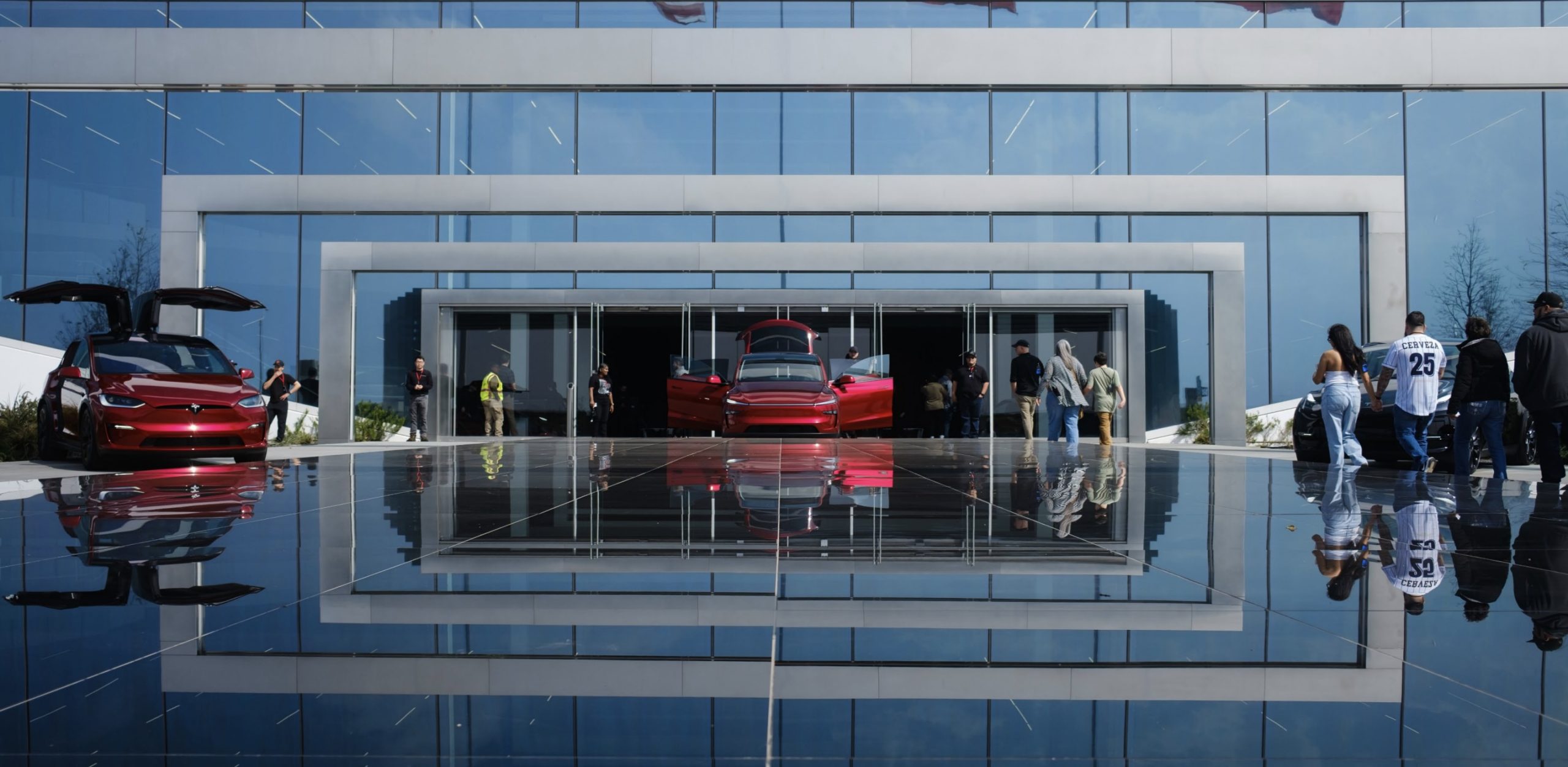
Tesla Chair Robyn Denholm has issued a letter to shareholders celebrating what she described as “overwhelming support” at this year’s Annual Meeting, framing the approval of Elon Musk’s trillion-dollar pay plan as a defining moment in Tesla’s mission.
Denholm stated that the vote highlighted TSLA investors’ continued confidence in both Musk’s leadership and Tesla’s vision for an autonomous, AI-driven future.
Denholm hails shareholder confidence
In her letter, which was posted by the electric vehicle maker on X through Tesla’s official handle, Denholm thanked investors for backing Proposals One, Three, and Four, items she said reaffirm Tesla’s “Master Plan Part IV” and its broader mission to accelerate sustainable prosperity. She characterized the shareholder vote as “a vote of confidence in our visionary leader, Elon,” crediting Musk with transforming Tesla into one of the most valuable companies in history.
“In a year when many tried to sow doubt and negativity, you chose a better future,” Denholm wrote. “You chose ambition. You chose to see what is possible. You chose to back the people who have been in the room since the earliest days, fighting for the mission that first brought us all together—a better world for humanity,” she wrote in her letter.
Her comments framed Musk’s pay package approval not only as a governance milestone but as a symbolic endorsement of Tesla’s long-term trajectory across autonomy, AI, and energy innovation.
“A whole new book” of innovation
Denholm highlighted Tesla’s push toward autonomy as the company’s next major growth phase, citing the Robotaxi program and Optimus humanoid robot as examples of bringing artificial intelligence “into the physical world.” She described this period as potentially “the largest value-creation event in Tesla’s history, and quite possibly in the history of humanity.”
The letter reaffirmed the board’s commitment to direct engagement with shareholders through Tesla’s online platform and live events. Denholm emphasized that feedback from investors “informs our strategy and strengthens us” as Tesla prepares for new technology rollouts and expanded AI capabilities.
“You, our shareholders, have given us the mandate and the runway to execute. We are humbled, and rest assured that we do not take that responsibility lightly… Thank you for believing in Tesla. Thank you for standing with us. We look forward to years of bold leadership and pioneering innovation, fueled by our commitment to creating a better future for all,” she wrote.
Elon Musk
Twitter co-founder Jack Dorsey endorses Elon Musk Tesla pay package
Dorsey framed the pay package as an engineering and governance crossroads for Tesla.

Twitter co-founder and Square CEO Jack Dorsey has publicly backed Elon Musk’s leadership ahead of Tesla’s pivotal shareholder vote, which is expected to be decided later today at the company’s 2025 annual meeting.
Dorsey framed the pay package as an engineering and governance crossroads for Tesla.
Dorsey’s public nod framed as an engineering defense of Musk
In a post on X, Dorsey weighed in on Tesla’s post about being in a “critical inflection point.” As per the Twitter-co-founder, the vote on Musk’s 2025 performance award is not about compensation. Instead, it’s about ensuring the path for the company’s engineering in the coming years.
“This is not about compensation. it’s about ensuring a principled (and exciting!) engineering approach to the company’s future,” Dorsey wrote on his post, later stating that users of Cash app with TSLA shares would be able to vote for the CEO’s proposed 2025 performance award.
Elon Musk appreciated Dorsey’s endorsement, responding to the Twitter co-founder’s post with a heart emoji. Musk has been pretty thankful for the support for is fellow tech executives, also thanking Michael Dell recently, who also advocated for its proposed 2025 performance award.
Musk’s support
While Elon Musk’s 2025 performance award has received opposition from proxy advisors such as Glass Lewis and ISS, it has received quite a lot of support from longtime bulls such as ARK Invest, and, more recently, Schwab Asset Management following calls from TSLA retail shareholders.
“Schwab Asset Management’s approach to voting on proxy matters is thorough and deliberate. We utilize a structured process that focuses on protecting and promoting shareholder value. We apply our own internal guidelines and do not rely on recommendations from Glass Lewis or ISS. In accordance with this process, Schwab Asset Management intends to vote in favor of the 2025 CEO performance award proposal. We firmly believe that supporting this proposal aligns both management and shareholder interests, ensuring the best outcome for all parties involved,” Charles Schwab told Teslarati.
Elon Musk
Tesla Robotaxi and autonomy dreams lean on shareholders: Wedbush

Tesla’s dreams of developing a Robotaxi suite that utilizes a fully autonomous platform developed by the company’s top-tier talent now lean on shareholders and perhaps the most crucial vote in its history.
That’s what Dan Ives of Wedbush said in a new note to investors on Wednesday. As the Annual Shareholders’ Meeting is now just one day away, investors are down to their final chance to vote for or against Elon Musk’s new compensation plan.
Ives wrote that, while the company has made its intentions clear, wanting to maintain Musk, pay him accordingly, and give him the voting power he has long wanted, ultimately, the responsibility falls on investors.
🚨 A new note from Wedbush’s Dan Ives on Tesla $TSLA:
“A Big Day On Deck Tomorrow for Musk and Tesla; We Expect Pay Package Passes
Tomorrow Tesla will be hosting its annual shareholder meeting with all focus on the Musk pay package on deck. We expect Musk to get overwhelming…
— TESLARATI (@Teslarati) November 5, 2025
As many retail shareholders have pushed for people to vote for Musk’s compensation package, there are a handful of large-scale funds and firms that have decided to go in another direction. Bullish Wall Street firms, Wedbush being one of them, believe it is crucial for Tesla to maintain Musk.
The vote could have major implications on whether Tesla launches an autonomous Robotaxi suite in the near future, Ives says:
“Getting Musk’s pay package approved tomorrow at the highly anticipated meeting will be a big step towards advancing Tesla’s future goals with the autonomous and Robotaxi roadmap ahead.”
While some investors are convinced the company is ready to go in a different direction simply based on Musk’s political involvement over the past year, many investors are under the impression that the development of Tesla’s autonomy suite, as well as its prowess in the EV sector, would fall if Elon were not at the helm.
Tesla’s Board of Directors has already stated that they have received confirmation that Musk’s political involvement would wind down in a timely manner. Moving forward, his focus will not veer from the mission of any of his companies; at least that’s what can be gathered from some of the Board’s communications over the past month.
Musk’s new compensation package is incentivized by performance metrics and will require him to achieve a handful of lofty tranches. He will not get paid unless he drives shareholder value, which is something many skeptics tend to leave out.
Ives continues:
“This new incentive-driven pay package for Musk would also provide an additional 423 million shares of common stock (~12% of shares), which would increase his ownership of Tesla up to ~25% voting power, which we believe was critical to keep Musk at the helm to lead Tesla through the most critical time in the company’s history. We believe this was the smart move by the Board to lay out these incentives/pay package at this key time as the biggest asset for Tesla is Musk…and with the AI Revolution, this is a crucial time for Tesla ahead with autonomous and robotics front and center.”
Wedbush maintained its Outperform rating and $600 price target on shares.
-

 News4 days ago
News4 days agoTesla shares rare peek at Semi factory’s interior
-

 Elon Musk4 days ago
Elon Musk4 days agoTesla says texting and driving capability is coming ‘in a month or two’
-
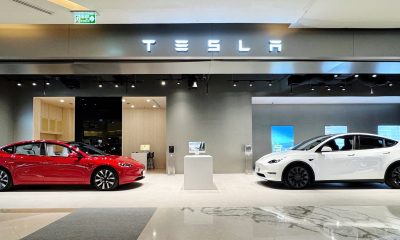
 News3 days ago
News3 days agoTesla makes online ordering even easier
-
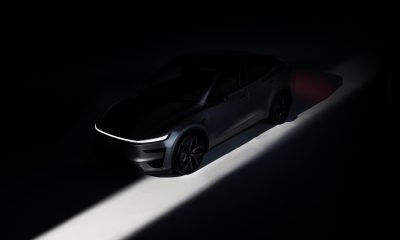
 News4 days ago
News4 days agoTesla Model Y Performance set for new market entrance in Q1
-
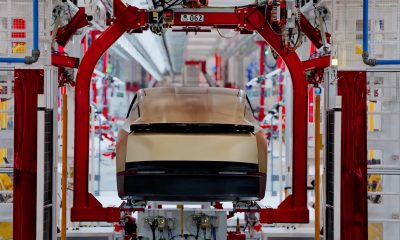
 News5 days ago
News5 days agoTesla Cybercab production starts Q2 2026, Elon Musk confirms
-
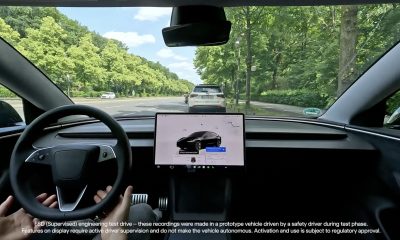
 News5 days ago
News5 days agoTesla China expecting full FSD approval in Q1 2026: Elon Musk
-
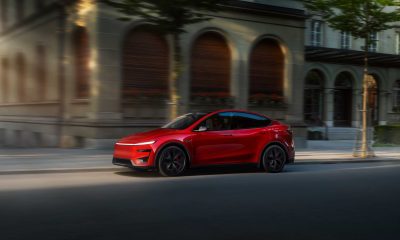
 News6 days ago
News6 days agoTesla Model Y Performance is rapidly moving toward customer deliveries
-
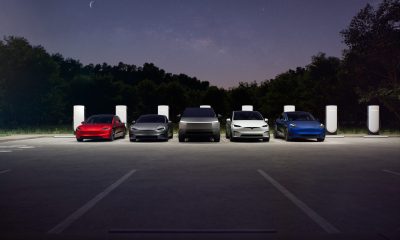
 News2 days ago
News2 days agoTesla is launching a crazy new Rental program with cheap daily rates


